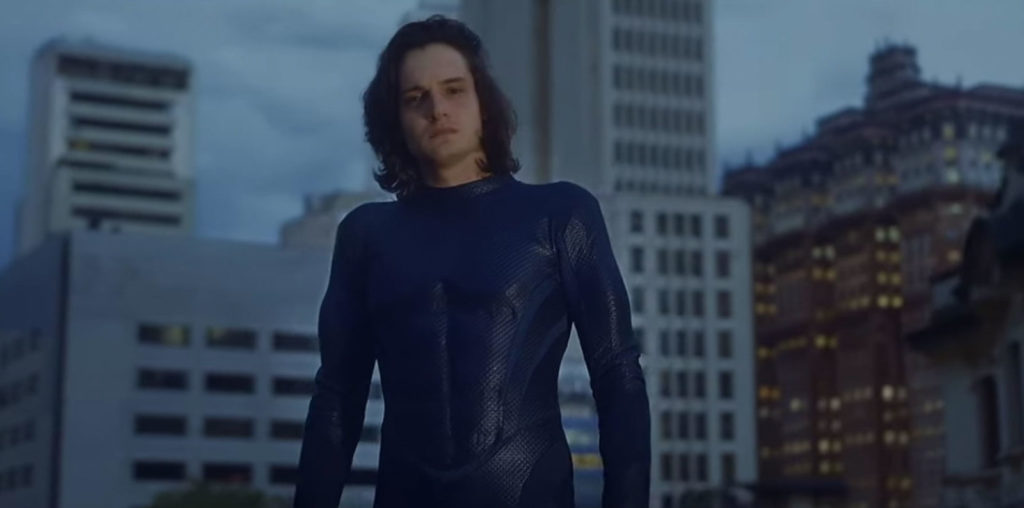
“Apparition of the Eternal Church,” a fascinating documentary by Paul Festa, takes its name from the title of a terrifyingly intense organ work by Olivier Messiaen. The film uses a unique method to study a fascinating question: what is going on in people’s minds when they listen to music? What is different about the way that different people listen, and what, if anything, is similar? The Messiaen work, which is almost overwhelmingly visceral and disturbing in its discordant tone of religious torment and redemption, is an excellent piece of music for exploring this question, because it is almost guaranteed to get an extreme reaction, positive or negative, from anyone.
Festa asked a large cross section of people, of diverse ages, genders, ethnicities, and levels of musical education, to listen to this piece on headphones, and he filmed them listening, asking them to describe their experience as they listen. At first, I doubted that this method would reveal anything interesting, since it is so hard to simultaneously listen, analyze, and verbalize one’s experience, but the results are actually highly illuminating, and provide a wonderful glimpse into the way that different people hear music.
Festa provides no outside commentary, and he uses editing alone to make his points. He cuts from one interview to another, revealing the stark differences in how various people react to the same passage of music. Some people find parts of the music terrifying, ugly, or oppressive, while others find the same passages exhilarating and beautiful. Some people derive visual images from music, some focus on body sensations, some on emotional reactions and strongly triggered memories, and the more musically trained listeners have a vocabulary which helps them to think about the differences between specific chords and melodies. Some people are propelled by the music deep into their childhood fears and longings. Some are not good verbalizers, but as they listen in wordless rapture, we are able to read their feelings by watching their faces and bodies. It was interesting to note those musical passages where many of the listeners experienced something similar. For example, there is a passage where the chords ascend chromatically, which many people described as being like a staircase or a series of terraces.
Surprisingly, the film ends up making a powerful argument for the value of musical education. The music is so powerful that it has a strong effect on all the listeners. But the film makes clear that those persons who are well educated about musical form and about musical history have a much richer and more multi-dimensional experience than those who lack this education. The less educated listeners have no context in which to place what they are hearing, and they are overwhelmed and irritated by the experience. They have no vocabulary to help them understand their responses, so they often end up rejecting or dismissing the music. The more musically knowledgeable ones, on the other hand, have the same spectrum of emotional and physical responses as everyone else, but they are more able to enjoy the music because they can place it in the context of a world of knowledge and culture.
After the interviews, we get to hear the entire piece ourselves for the first time. Anyone who doesn’t happen to already know the piece will, by this point, be very curious to hear it. During the music, we see a collage of the facial expressions of the people who were interviewed, which serves to gently remind us of what they said. We also see inter-titles with quotes which relate obliquely to the religious background of Messiaen’s composition. Personally, I found that these quotes did not add to my experience of the music or of the film, mainly because it was hard for me to both read the quotes and fully listen to the music.
The interview subjects include a good number of well-known filmmakers, scholars and artists, such as Sandi DuBowski who made the film “Trembling Before G-d,” or comic Marga Gomez. But the most poignant comments come from Albert Fuller, an organist, teacher, and mentor of Festa’s, who died shortly after the film was completed. Fuller played this piece when he was younger, at the Washington Catherdral, and his detailed, physical description of the nature of Christ’s suffering on the cross is a poignant highlight of the film, since surely Messiaen sees this suffering as the heart of his musical vision. It is telling that Fuller does not even want to listen to the whole piece, not because he finds it dull, but because the experience is so overwhelming that it is more than he is prepared to take in at the moment.
Festa is investigating a key question about musical aesthetics, and he has invented a methodology to study it which provides very illuminating results. His brilliant use of editing, and his skill as an interviewer, allow the viewer to have many insights into the varieties of musical experience.
